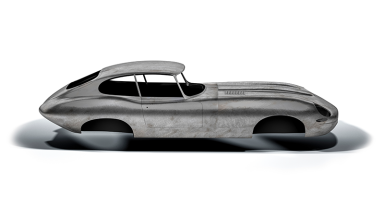
This is the first brand of coating products available on the market that features a complete refinishing technology for classic cars. It has been borne out of a passion by the car owners at NOVOL for the beauty of unique car bodies.
After 10 years on the market, NfCC is a brand where passion meets perfect technology. Tens of thousands of classic vehicles throughout Europe have benefited from the brand. They include absolutely peak examples of automotive engineering that feature in many European car collections. Remember that when a classic car renovation project is done and documented properly, it not only makes the vehicle a truly enjoyable thing to see, but it also significantly drives up its market value.
For NOVOL, the manufacturer and supplier of refinish coating technologies, the highest accolade and the thing we are the most proud of is that our partners at the best car renovation garages have been the co-creators of the NfCC collection. 10 years later, driven by the trust and growth in our competencies, this now provides the best lineup of products for classic car renovation.
OT Technology - Pre 1980s

10 Stage System
1 - CLEAN BARE METAL

A thorough the stripping of the old paint coats from the bodywork and chassis components of cars is key to the vehicle renovation processes. There are currently several options and technologies available for the removal of old coatings. A summary of the available technologies, along with their pros and cons, are:
- Sand blasting – this term can be misleading, as it suggests that sand is the only abrasive medium available, when there are a number of other types of abrasive grit used in bulk for blasting, like corundum (aluminium oxide), copper smelting slag, and… nut shells. Each abrasive medium has its own unique abrasive strength and performance. Sadly, the poor application of these materials can deform the surface. This type of process is most recommended for confined locations with internal bracing and the edges of bodywork. It is not advised to sand blast the panelwork itself, unless using one of the latest synthetic abrasive media, such as plastic grit. Plastic grit, in the form of fine balls, carries a low risk of bodywork damage, while maintaining a very high level of coat stripping performance.
- Glass bead peening – a less invasive abrasive blasting medium, which is excellent for stripping coats from small workpieces as well as whole assemblies. Here the abrasive takes the form of fine beads of glass, which can be used to gently remove decorative finish coats.
- Soda blasting – this is one of the latest abrasive processes, and is growing in popularity. The abrasive is based on baking soda with a specific grain size. While it is very mild to the base material, it has a low efficiency in stripping hard coatings, meaning that reprocessing may be required. One risk of this type of processing is the soda residues left on the base material prior to recoating. It is best to thoroughly wash soda-blasted workpieces before recoating.
- Chemical stripping – this is the most complex of all coat stripping processes; however, it is the most efficient and the safest for old workpieces. It involves professional stripping chemicals, placed in tanks, into which the workpieces are dipped and bathed. Chemical stripping perfectly cleans workpieces of old coatings and, once the chemicals have been neutralized, leaves the workpiece surfaces ready for the following refinishing processes.
- Pyrolysis – a process well known in other industries, and involves the stripping of old coats at high temperatures. A vehicle to be processed requires the removal of all synthetic and plastic parts, prior to being moved to a pyrolytic stripping oven. Here it is held at very high temperatures that are still below the steel deformation point.
- Mechanical or power stripping – this is the most common removal method for old coats. While it is the most time intensive of the processes listed here, it provides the best control over the stripping process. The coats are removed using power strippers with abrasive paper and plastic pads.
© Copyright 2024. All rights reserved.
About Us | Privacy Policy | Cookies Policy | T&Cs | Website T&Cs
We need your consent to load the translations
We use a third-party service to translate the website content that may collect data about your activity. Please review the details in the privacy policy and accept the service to view the translations.










